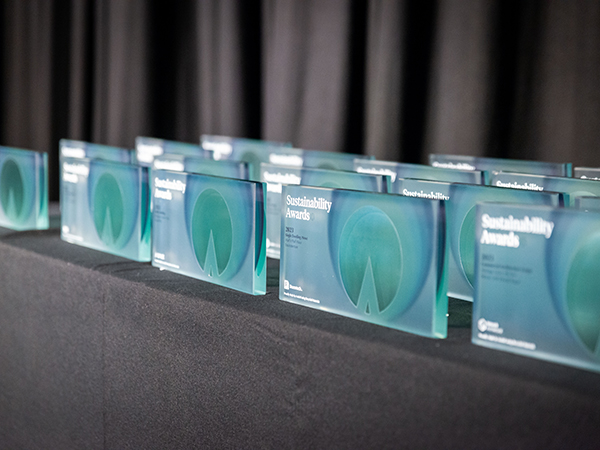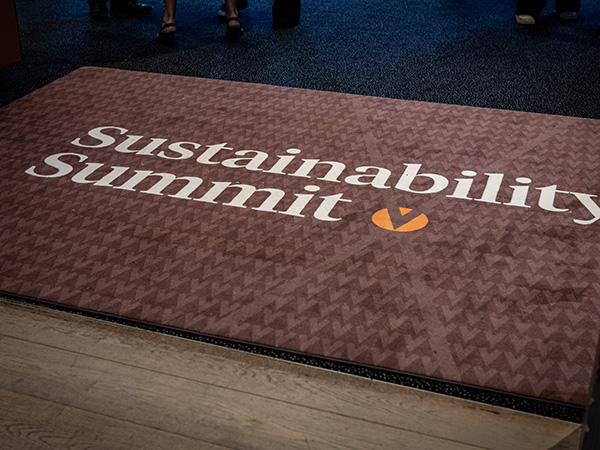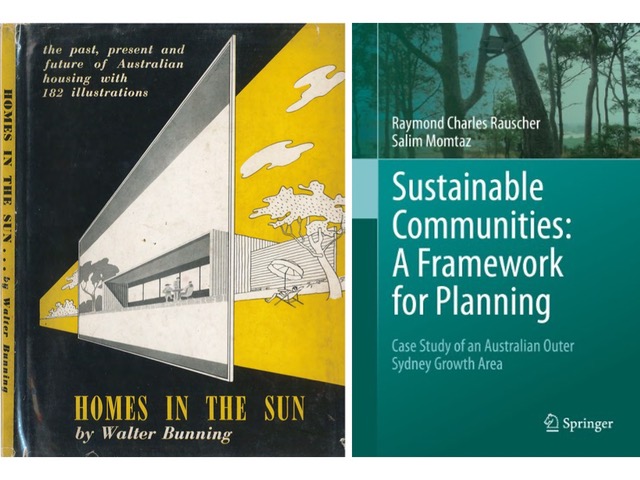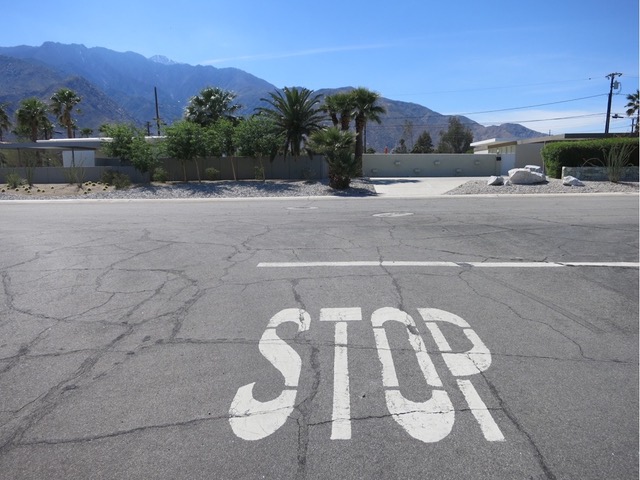Quotes this week
“Many hands make light work”, a saying attributed to John Heywood, and Nehemiah 3 in the Bible, described here.
The changing names of sustainability

Not many will know that this month's popularly attended Sustainability Summit was the seventeenth in a row, or that the name has changed several times in those years, which begs the question about how the face, and name, of sustainability has changed over time.
The word sustainability, at least as applied to design, traces back to the 1970s, but the origins of the idea go back to interests in passive solar and better urban design after WW2 (Homes in the Sun, Walter Bunning, 1945). The 1960s then saw two emerging and intersecting trends.
The first was environmental design, following increasing awareness of environmental issues through the work of Rachel Carson (Silent Spring), Jane Jacobs (Death and Life of Great American Cities) and Barbara Ward (Only One Earth) (as outlined in ToT #8). Quite appropriately their work was celebrated at a special discussion this year's Sustainability Summit.
The second was ‘alternatives’ generally, and the alternative technology movement in particular (The Whole Earth Catalog, Stewart Brand, 1968+ and Shelter, Lloyd Khan, 1974), and the ‘oil shocks’ of the early seventies brought an interest on energy efficiency.
These were combined, somewhat awkwardly, into the ESD movement, (for ‘environmentally sustainable design’, although the E sometimes referred to ‘ecologically’, despite few designers having a working knowledge of ecology.
Taking account over time of the wider issues of construction, materials, water and energy costs led to another TLA (three letter acronym): LCA or lifecycle assessment. And when internal conditions were considered, a further TLA was born: IEQ, for internal environmental quality.
Better considerations of the external envelope and thermal comfort led to the invention of passivhaus, which has metric measurement, as does the programs of Green Star, NABERS, NatHERS and BASIX (NSW). More recent considerations on climate change has led to an emphasis on the carbon footprint, whether it be carbon neutral, or net zero, or carbon positive.
But all these names allude to a focus on improving the energy and environmental performance of individual designs, changing the world one better building at a time. Not that there’s anything wrong with that, but this year’s Sustainability Summit marked a dramatic change in focus.
The changing focus of sustainability

In another review of the Sustainability Summit I morphed the motto “It takes a village to raise a child” into “It takes a community to raise sustainability”. It is very clear from the content of this year’s event that we are moving beyond the individual building, the individual design, or an individual action, into a systems approach. The summit marked this change in direction towards systems with the most commonly used term of “community”.
Sustainability is now seen as ‘in globo’ or all encompassing. Increasing climate change forces an understanding of the interrelated systems at work, and how a communal approach is needed to address the complexity. We look beyond the individual building to wider systems. As the Bible almost says, “many hands are needed to make lights work” (or at least keep them on).
A discussion on increased house ratings (beyond 7 to 10 Star) devolved into the futility of improving an individual new house when the mass of existing housing stock was below 3 star. How to raise the whole community of housing rather than a few ‘starhouses’?
The circular economy was discussed as a way to develop the interrelationships for more sustainable recycling, rather than concentrating on the rating an individual product. In the discussion on EVs (electric vehicles) the circular economy was invoked as crucial for the retention and reuse of precious metals and materials in sophisticated digital and battery products.
That discussion also ranged well beyond a reduction in individual personal vehicles to issues of mass transport and autonomous transport systems, to charging grids, to the reduction in storage areas for vehicles, and possibilities for enormous changes being wrought in systems used for moving goods. All of which require a communal approach.
Attention was paid to natural systems, landscape and the possibilities of biophilia (as well as biomimicry) in a very lively session. Services such as energy supply, sewer and water need to be addressed as interconnected systems with a communal benefit, far beyond the largely discredited idea of autonomous houses.
Personal mantras and actions by individual designers are still important and some of the 10 discussions did examine those issues, but the overall theme of this year’s Sustainability Summit was about a bigger, more political question: how to motivate our entire society into adopting sustainable systems, how to galvanise the community into communal solutions.
Bookends

Two books seventy years, and a world away, from each other: from the individual house (1945), to the sustainable community (2014)
Signs off

The modernist idea of perfect suburbia has come to a dead end, and must be stopped.
Next week
The most revolutionary design school in Australia.
Tone Wheeler is an architect /adjunct prof UNSW / president AAA and has MC’d 5 Sustainability Summits so far.
The views expressed are his.
These Design Notes are Tone on Tuesday #189, week 47/2023.
Past Tone on Tuesday columns can be found here
Past A&D Another Thing columns can be found here
You can contact TW at [email protected]

